Library of Tech Briefs
Porous polymers are the unknown science behind many of the products we use every day, providing key functionalities to products as diverse as coloring markers and diagnostic tests. In this Tech Brief series, learn about the different types and functions of porous polymers and how they can be applied in just about any industry.
For almost 60 years, Porex has been partnering with our customers to deliver engineering and design innovations in porous polymers that turn their product ideas into reality. Our Porex material science experts prepared this Technical Brief series on how porous polymers can improve your product’s performance and drive market differentiation in your industry.
Perfect for design and manufacturing engineers who either have a potential product concept or need to fix a problem with an existing product, significantly contributed to this Tech Brief series to explore the science behind porous polymers and how to select the right type of material for your application.
Life Sciences
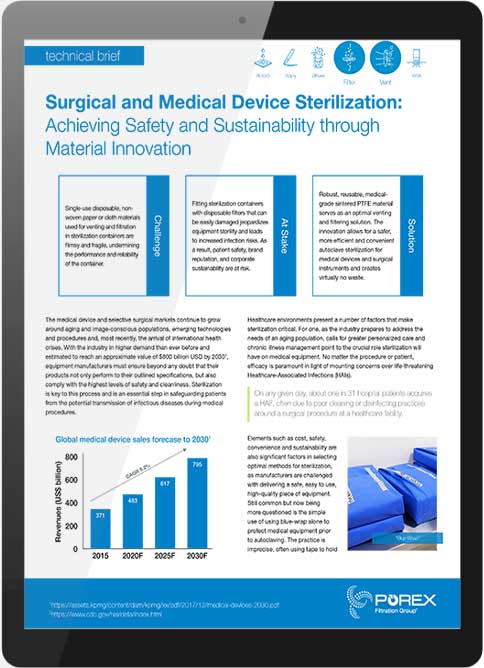
Medical Devices
Surgical and medical device sterilization: Achieving safety and sustainability through material innovation
Learn more about the innovative and reusable medical-grade materials that can be designed into sterilization containers, and the science behind how they achieve this increased performance.
Download
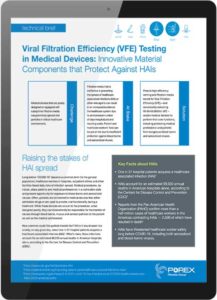
Medical Devices
Viral filtration efficiency (VFE) testing in medical devices: Innovative material components that protect against HAIs
Nearly one in 31 hospital patients acquires a healthcare-associated infection (HAI)—and these infections lead to an estimated 99,000 annual deaths in American hospitals alone, according to the Centers for Disease Control and Prevention (CDC).
Download
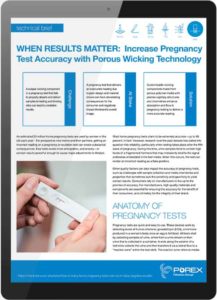
IN-VITRO DIAGNOSTICS
When results matter: Increase pregnancy test accuracy with porous wicking technology
For expecting parents, home pregnancy tests are counted on to deliver fast and accurate results, up to 99 percent in fact. However, its reliability can be put to the test if the device is equipped with a subpar wicking component.
Download
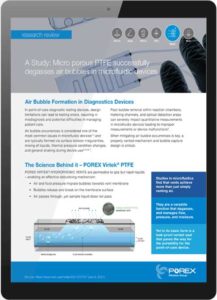
IN-VITRO DIAGNOSTICS
Micro porous PTFE successfully degasses air bubbles in microfluidic devices
Air bubble occurrences is considered one of the largest and most common challenge in microfluidic designs, causing issues downstream in reaction or detection zones.

IN-VITRO DIAGNOSTICS
Improved Drugs of Abuse Sample Collection
Although the use of oral fluid has gained increasing momentum as a minimally invasive sample type, methods to improve the ease and accuracy of its collection are still being addressed.
Download

Life Sciences
Certified Pure Materials:
Expedite FDA Approvals for Medical Devices
In this tech brief written for medical device engineers and researchers, learn what third-party material purity tests are associated with each FDA application tier so that manufacturers can enable a faster device market launch.
Download

IN-VITRO DIAGNOSTICS
Porosity Analysis on Hydrophobic Microporous Membranes
Maybe asking for a 0.22 micron filter isn’t the specification requirement you need. Due to the various methodologies for describing pore size in different porous material types in certain application areas, a new standard has formed: bacterial and viral filtration efficiency rating.
Download
Consumer Goods
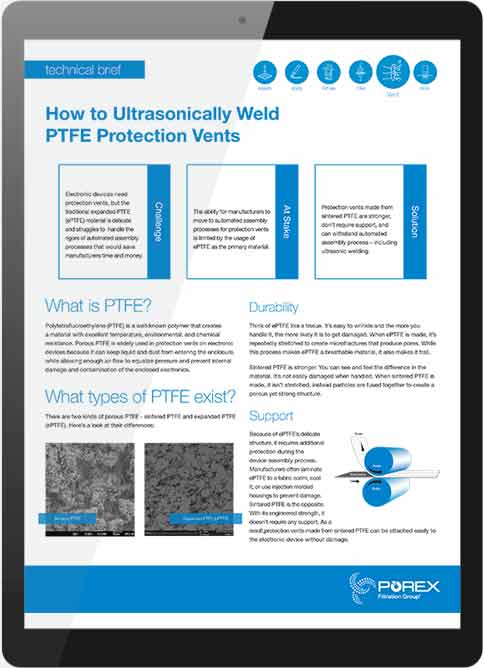
Electronics
How to ultrasonically weld PTFE protection vents
In this tech brief, learn about protection vents made from sintered PTFE, the stronger option that can withstand any automated assembly process to make the manufacturing process more efficient.
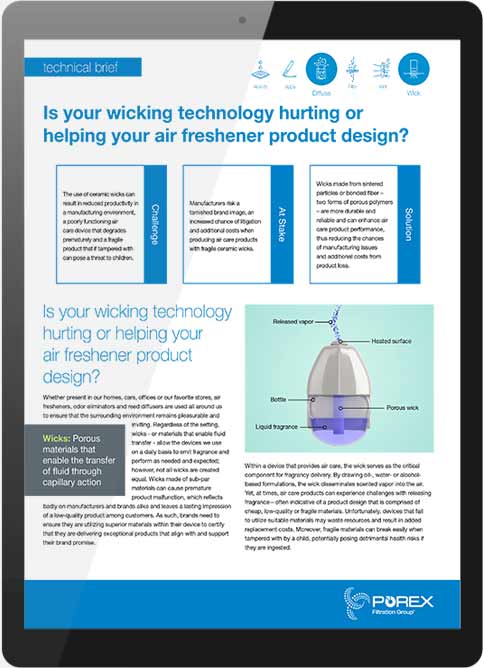
Air Care
Is your wicking technology hurting or helping your air freshener product design?
In this tech brief, discover how air care products utilizing wicks made from porous polymers offer greater functionality that enable better emanation rates for a controlled and consistent delivery as well as provide a safer, more sustainable and cost-effective solution.
Download
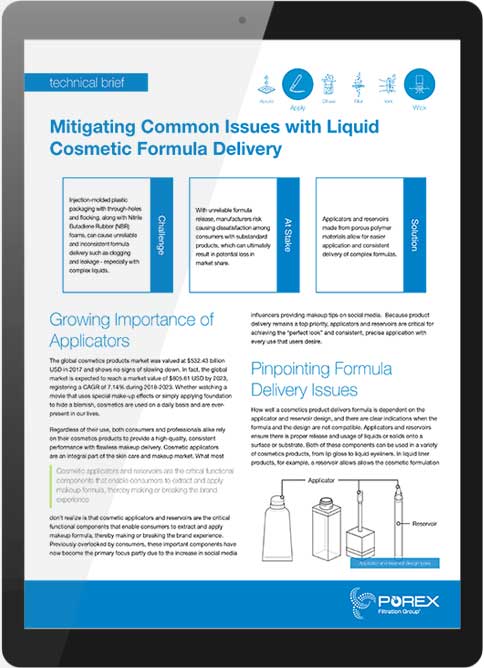
Personal Care & Beauty
Mitigating common issues with liquid cosmetic formula delivery
In this tech brief, discover how applicators and reservoirs made from porous polymer materials allow for easier application and better formula delivery, providing a reliable product that is also sustainable and contributes to a desired look.
Download
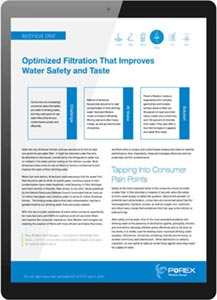
Water Filtration
Optimized Filtration that Improves Water Safety and Taste
Consumers are increasingly concerned about the safety and taste of their drinking water, and they seek point-of-use water filters that remove contaminants quickly and efficiently. However, standard filtration media is limited in efficiently filtering.
Download
Industrial
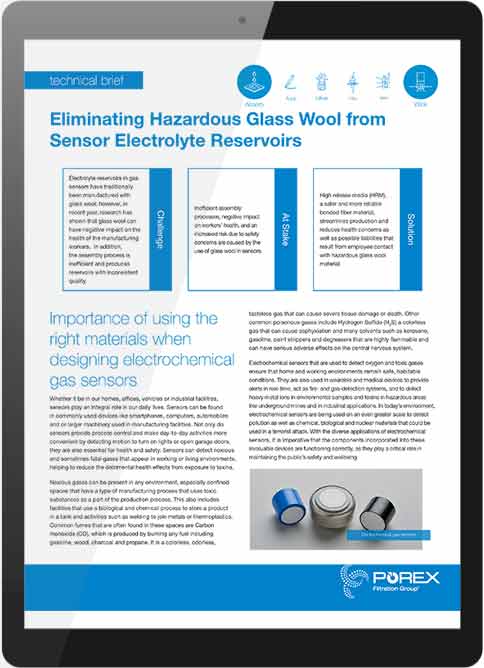
Sensors
Eliminating hazardous glass wool from sensor electrolyte reservoirs
In this tech brief, learn how not only to remove glass wool from your sensor assembly entirely but also to increase the efficiency and consistency of the reservoir assembly process.
Download
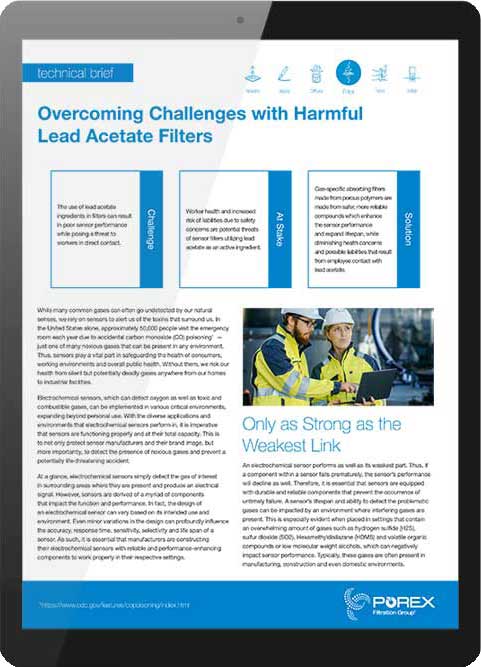
Sensors
Overcoming challenges with harmful lead acetate filters
In this tech brief, learn how porous polymers can be used in absorption filters instead of lead acetate to make them safer for the environment and workers – and to enhance the sensor’s performance and lifespan.
Download

Water Filtration
Optimized Filtration that Improves Water Safety and Taste
Consumers are increasingly concerned about the safety and taste of their drinking water, and they seek point-of-use water filters that remove contaminants quickly and efficiently. However, standard filtration media is limited in efficiently filtering.
Download

Electronics
How to ultrasonically weld PTFE protection vents
In this tech brief, learn about protection vents made from sintered PTFE, the stronger option that can withstand any automated assembly process to make the manufacturing process more efficient.
Download
Automotive
Electronics
How to ultrasonically weld PTFE protection vents
In this tech brief, learn about protection vents made from sintered PTFE, the stronger option that can withstand any automated assembly process to make the manufacturing process more efficient.
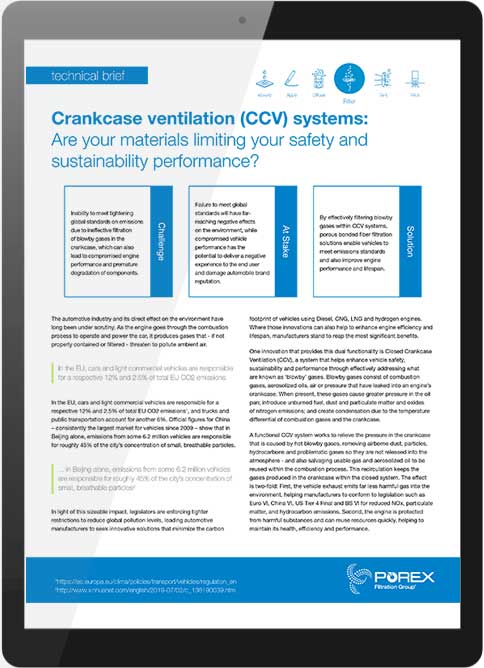
Automotive & Aerospace
Crankcase ventilation (CCV) systems: Are your materials limiting your safety and sustainability performance?
In this tech brief you will learn how high-performing porous polymer media used in closed crankcase ventilation (CCV) system filtration can help manage critical fluids and gases, ultimately enhancing vehicle performance, driver safety and sustainability metrics—and as a result, manufacturer reputation.

